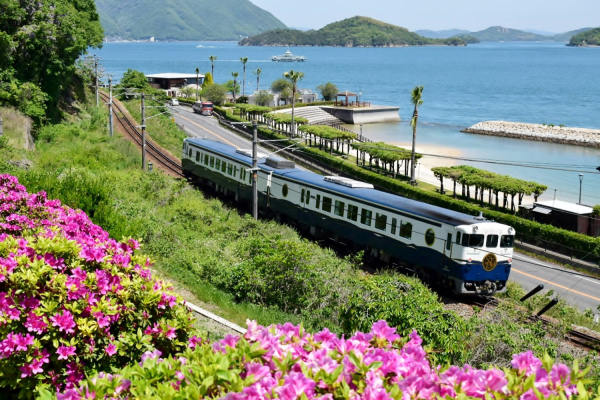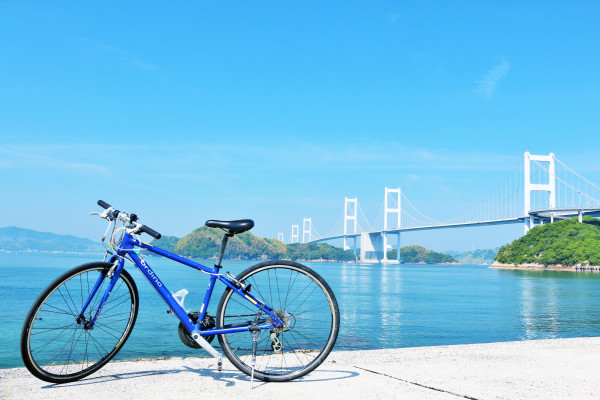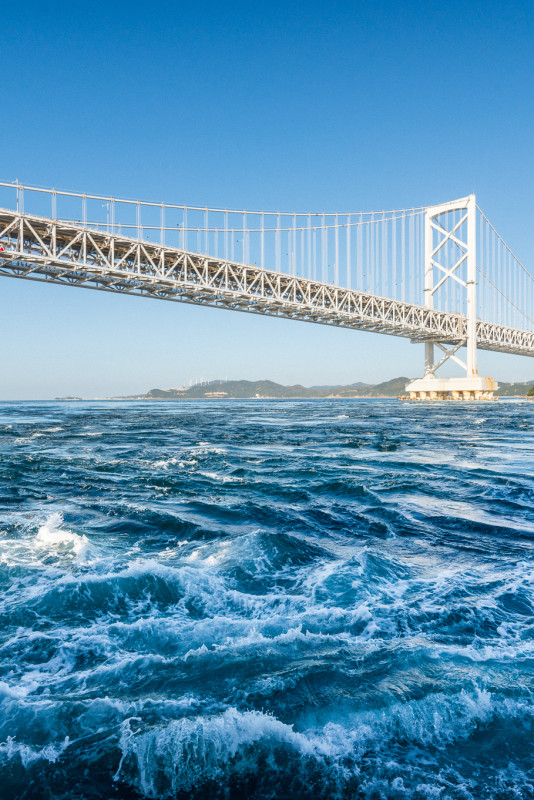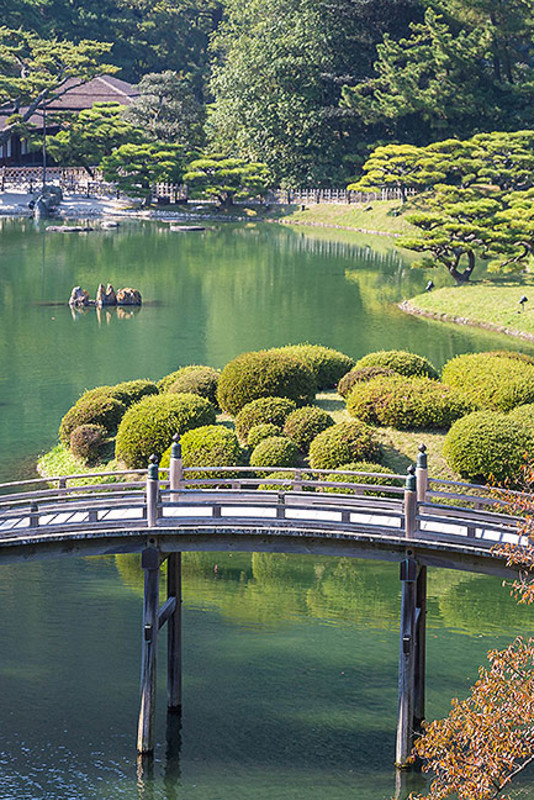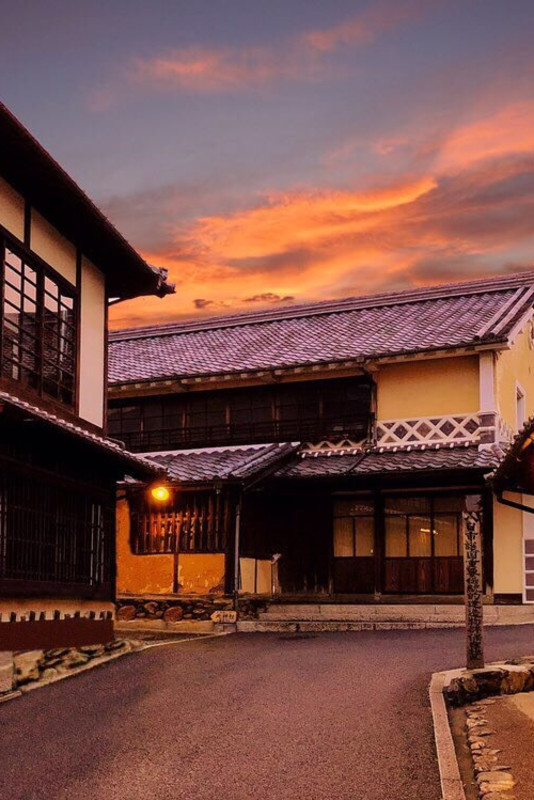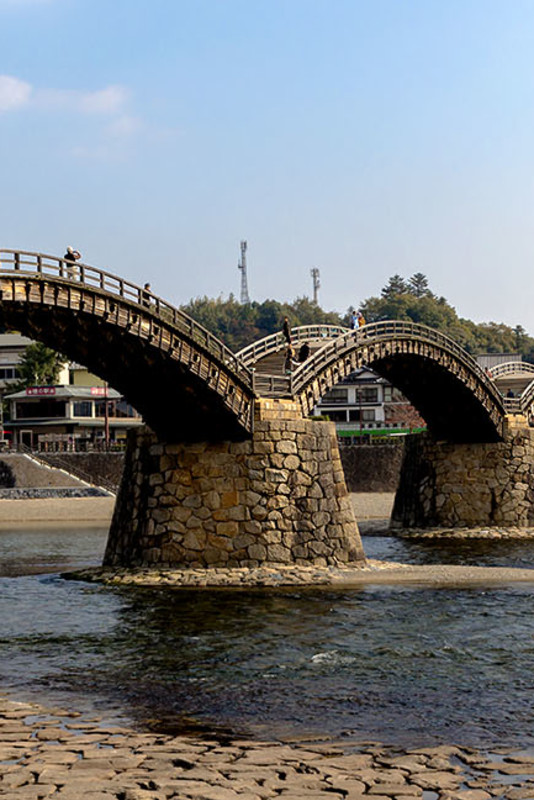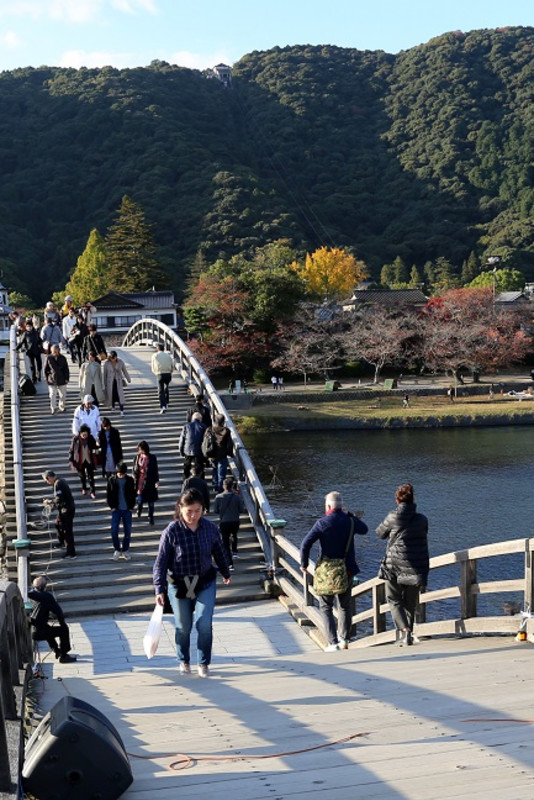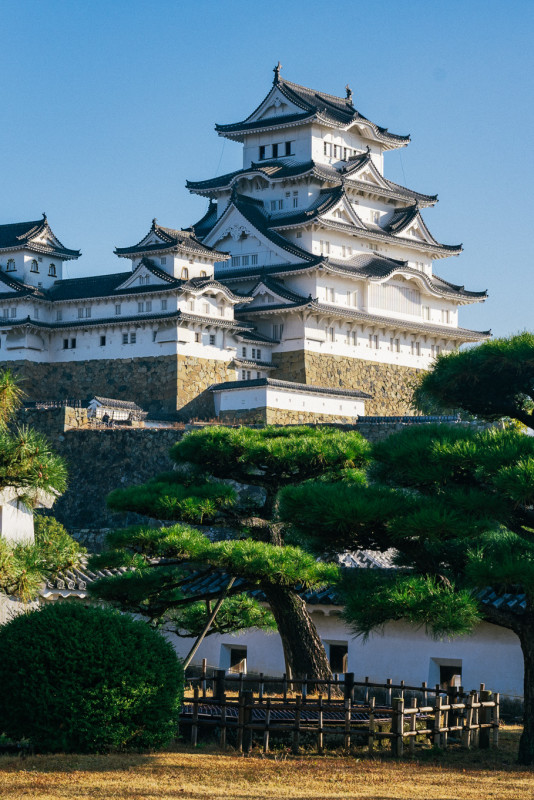Itineraries
Discover Shikoku’s Rich History and Culture on this Four-Day Itinerary

Experience the traditions and culture of the Setouchi region and savor its beautiful scenery as you travel through the region. This itinerary will take you from Tokushima, home of indigo dyeing and energetic Awa dance, to the idyllic Iya Valley where you will stay in a renovated farmhouse for a truly authentic Japanese cultural experience in an unmatched location and on to the gardens of Takamatsu and Okayama.
- Day 1
- Tokushima
Travel: Osaka to Tokushima
By Car
・The most direct route to Tokushima from Osaka is crossing Awaji Island via the Akashi Kaikyo Bridge by car or bus. When it was completed in 1998, the Akashi Kaikyo Bridge was the longest central span suspension bridge in the world.
By Train
・You can also take the train to Tokushima via Okayama, Seto Ohashi Bridge and Takamatsu (Approx 3 hours)
By Train and Bus
・Take the train from Osaka Station to Sannomiya Station (Approx 30 minutes)
・Take the highway bus from Sannomiya Station to Tokushima Station (Approx 2 hours)
Tokushima Prefectural Awa Jurobe Yashiki (Puppet Theater and Museum)
This beautiful puppet theater puts on daily traditional Japanese puppet performances from March through to December. The theater also houses a permanent exhibition where you can learn all about this traditional Japanese performing art with its roots in Tokushima and neighboring Awaji. The theater itself is set within the grounds of the former residence of Bando Jurobe, a historical figure and the inspiration for the popular puppet play Keisei Awa no Naruto.
URL: https://joruri.info/jurobe/english/
Dance the Awa Odori at the Awa Odori Kaikan
The Awa Odori is a festive dance famous for its energy and high-tempo music. The dance originated in Tokushima and every August over a million revelers attend the city’s Awa Odori Dance Festival making it one of the biggest festivals in Japan. Whatever the time of year, you can visit the Awa Odori Kaikan Hall to see live dance performances and take to the stage yourself to learn the Awa Odori from the professionals.
URL: https://www.awaodori-kaikan.jp
Discover and try Awa Indigo Dyeing
Tokushima's aizome indigo dyeing is an 800-year-old craft characterized by its use of natural plant dyes and its dark hues known throughout the world as “Japan Blue.” Aiyakazou is an aizome shop founded in 1808 by the Okumura family with a wonderful selection of beautiful handcrafted goods for sale. Across the street at Ai no Yakata, housed in the former residences of the Okamura family, you can try your hand at indigo dyeing for yourself (reservations not necessary).
URL: https://www.aiyakazou.com
Tokushima Ramen and Awa Chicken
You are spoiled for choice when it comes to dining in Tokushima with a wide range of delicious local fare on offer. Fans of ramen should try Tokushima ramen with its signature raw egg topping that turns the soup creamy and buttery when mixed in.
Another Tokushima specialty is tai-meshi sea bream rice – rice cooked with red sea bream and served with a sprinkling of aromatic Setouchi vegetables and herbs.
Also keep an eye out for restaurants serving the local brand of chicken – a healthy, energetic variety they aptly named the awadori (Awa chicken).
Accommodation: Hotel Ridge
Stay overnight at the Hotel Ridge, a secluded wellness resort with stunning views of the Naruto whirlpools and the Naruto Ohashi Bridge. Everything at Hotel Ridge has been curated to make your stay as relaxing as possible. The hotel suite’s minimalist design and unobstructed views of the Seto Inland Sea all add to the general feeling of serenity. At dinner, the attention to detail in the presentation of the kaiseki meal will take your breath away. Treat your tastebuds to an ensemble of fresh seasonal ingredients. Along with their natural hot spring spa, Hotel Ridge offers guests thalassotherapy massages and treatments that harness the soothing properties of the sea.
URL: https://hotelridge.jp
- Day 2
- Takamatsu and Kotohira
Travel: Tokushima to Takamatsu
・Take the bus or train from Tokushima Station to Takamatsu Station (Approx 1 hour 15 minutes and 2 hours)
Ritsurin Garden
Enjoy traditional Japanese tea and a tranquil boat ride in Takamatsu’s world-renowned 400-year-old Ritsurin Garden. Famous for its picture postcard views and hundreds of well-manicured pine trees, Ritsurin Garden is designated as a Special Place of Scenic Beauty and received a glowing three-star review in the Michelin Green Guide Japan.
Bonsai at Nakanishi Chinshoen in Kinashi Town
After wandering among the pine trees of Ritsurin Garden, check out some in miniature in the nearby town of Kinashi. Takamatsu is said to produce 80% of Japan’s bonsai pines and Kinashi Town is the home of Takamatsu Bonsai. Nakanishi Chinshoen’s fifth generation-owner Yoichi Nakanishi is keen to help visitors interact with bonsai to learn more about this age-old craft. At Takumikumo Village, visitors can explore a forest of exquisite bonsai trees and leave with a newfound understanding of the philosophy, skill and patience needed to create these living masterpieces.
2.5 hour tour of the gardens and nursery, led by a bonsai master, followed by your choice of cultural experience (choose from creating your own bonsai moss ball, trying kintsugi golden joinery, making wagashi sweets, lacquerware or uchiwa fans) are available with 2 weeks advance notice.
Beautifully prepared lunches and dinners, using seasonal ingredients and served on artisanal tableware can also be arranged for groups of 4 people or more (Halal, vegetarian, vegan options also available) with 2 weeks advance notice.
URL: https://v.takumikumo.com
Sanuki Udon and Grilled Chicken on the Bone
Sanuki udon noodles is the go-to dish for locals and Kagawa Prefecture is known throughout Japan as the "Udon Prefecture." People travel from around the country to sample these noodles and you will see long lines outside the most popular restaurants.
Hone-tsuki-dori (grilled chicken thigh on the bone) is another local specialty. You can find restaurants offering variations of this dish throughout the region. The dish was created around 60 years ago when a local restaurateur was inspired by actors eating chicken on the bone in old Hollywood films.
Travel: Takamatsu to Kotohira
・Take a limited express train from Takamatsu Station to Kotohira Station, changing trains in Tadotsu (Approx 45 minutes to 1 hour)
Konpira Shrine (Kotohira-gu)
Konpira Shrine (also known as Kotohira-gu) is one of Japan's most famous and revered Shinto shrines. The shrine is dedicated to the god of sailors and seafaring, and visitors need to climb 785 stone steps to reach the main shrine building. If you are feeling more intrepid, you can climb the additional 583 steps to reach the inner shrine at the top of the mountain. As you explore Konpira Shrine, you will be amazed at the architecture, the intricate carvings on the buildings, and the stunning views of the surrounding countryside and the Seto Inland Sea.
Other nearby attractions include Kanamaru-za (Japan’s oldest kabuki theater) and the Kinryo Sake Museum. You can also try your hand at making the region’s famous Sanuki udon noodles at the Kotohira branch of the Nakano Udon School. Open from 8:30 am you can even have them for breakfast, like many locals do!
Accommodation: Kotohira Kadan
Kotohira Kadan is a historically significant, lavish Japanese ryokan hotel nestled on a mountainside in Kotohira Town. The immaculate Japanese-style suites have stunning views of the surrounding countryside and Konpira Shrine. With a long history dating back over 400 years, Kotohira Kadan’s guestbook is a Who’s Who of distinguished writers and artists who have stayed at the ryokan over the centuries. Unwind in Kotohira Kadan’s magnificent hot springs and enjoy Thai massages in the ryokan’s Salon Bankunmei. The exceptional Japanese cuisine at Kotohira Kadan is made from a delicious array of locally sourced, seasonal ingredients. Kotohira Kadan is the place to come for an authentic Japanese experience.
URL: https://www.kotohira-kadan.jp/en/
- Day 3
- Matsuyama and Dogo Onsen
Travel: Kotohira to Matsuyama
The train from Kotohira to Matsuyama goes through some breathtaking scenery as it travels along the Setouchi coastline.
・Take the train from Kotohira Station to Matsuyama Station, changing at Tadotsu Station (Approx 2 hours 10 minutes - 2 hours 30 minutes)
Matsuyama Castle, Dogo Onsen and Ishiteji Temple
Located on the western edge of Shikoku, Matsuyama is a city blessed with a host of cultural and historical landmarks waiting to be discovered. Start with a trip to the iconic Matsuyama Castle, an impressive hilltop castle with panoramic views of the city.
10 minutes by streetcar ride is Dogo Onsen – one of Japan’s oldest hot spring resorts and the inspiration for Studio Ghibli’s film Spirited Away. The original hot spring onsen is still in operation and open to the public. They also offer guided tours around the facility, including a look at the special bath constructed exclusively for the emperor’s private use. Next to the onsen, you can enjoy a glass of locally brewed Dogo Beer while soaking your feet in a foot bath.
Eclectic Ishiteji Temple is one of the 88 temples on the famous Shikoku Ohenro Pilgrimage route and is only a short distance from Dogo Onsen. As you go around Shikoku, you will undoubtedly spot pilgrims with their distinctive straw hats, white robes and walking stick trekking between temples. Visiting Ishiteji Temple is a way to experience a tiny part of this vast journey that attracts pilgrims from all over the world.
Matsuyama’s sea bream rice and goshiki somen noodles
Matsuyama is known for its delicious cuisine and these two dishes are held in high esteem. To create the sea bream rice (tai-meshi), sea bream and kelp are slow-cooked with the rice, infusing the whole dish with umami-rich flavors. Before serving, some regions around Matsuyama arrange raw slices of sea bream on top while others mix carrot and fried tofu into the rice.
Goshiki somen noodles come in five bright colors – brown, green, red, yellow and white. They achieve the different colors by kneading various ingredients into the noodles, such as matcha tea, mandarin oranges and ume plums.
Both goshiki somen noodles and sea bream rice can be ordered at Goshiki, 5 minutes walk south of Okaido streetcar stop fairly close to Matsuyama Castle.
Accommodation: Yamatoya Besso
Nestled in the heart of Matsuyama, Yamatoya Besso is an elegant ryokan hotel steeped in Japanese tradition and hospitality. The ryokan's rooms are built entirely out of Japanese cypress creating a calming atmosphere. The attentive staff will welcome you and attend to your every need during your stay. You can also indulge in the culinary delights of Yamatoya Besso, where kaiseki meals are skillfully crafted with the finest local ingredients.
URL: https://yamatoyabesso.com
- Day 4
- Ozu and Uchiko
Travel: Matsuyama to Oz
Take in the scenery as you travel from Matsuyama to Ozu by train.
Limited express trains make the journey in just 35 minutes, but the Iyonada Monogatari scenic train provides a 2-hour ride in stylish, retro-modern surroundings on weekend and holiday mornings. Included is a 10-minute stop at picturesque Shimonada Station which overlooks the Seto Inland Sea and a beautifully presented breakfast is also available.
URL: Iyonada Monogatari
Ozu Castle, Garyu Sanso and Tea, Ozu Castle Town and Pokopen Yokocho
Located in the south of Ehime Prefecture, Ozu is a charming castle town full of carefully preserved historical buildings. The beautifully reconstructed Ozu Castle stands on a hill by the Hijikawa River. Inside, you can explore exhibits on Ozu's history, which include displays of armor and artifacts from feudal Japan. The castle also famously offers overnight stays.
Garyu Sanso is an exquisite example of a traditional Japanese villa and garden. Furo-an, a tiny thatched-roof building located inside the garden and a favorite spot for photography enthusiasts, incorporates a living tree as one of its main pillars. Depending on the day of the week, Furo-an offers a special Japanese tea service.
Walk the streets of Ozu’s old town to connect with the past. Plenty of old merchant houses and samurai residences still stand in this picturesque town. Inside the old quarter, look out for the Pokopen Yokocho, a lively alley filled with retro memorabilia from the 1950s.
Washi Papermaking in Uchiko
A 15-min train ride to the east of Ozu is Uchiko, a historical town famous for its beeswax and paper production. Wander around the town’s historical preservation district to get a feel for life during its heyday over 100 years ago . Several places offer traditional washi paper making experiences, where visitors can learn about the process and create their own. wonderful souvenirs to take back home. The unique Ikazaki Kite Battle Festival is held here every May and the small but fun Ikazaki Kite Museum exhibits kites from around the world and offers kites to fly by the river free-of-charge.





































































